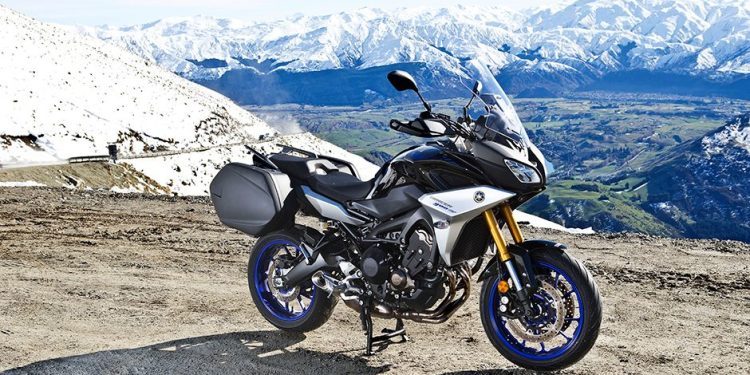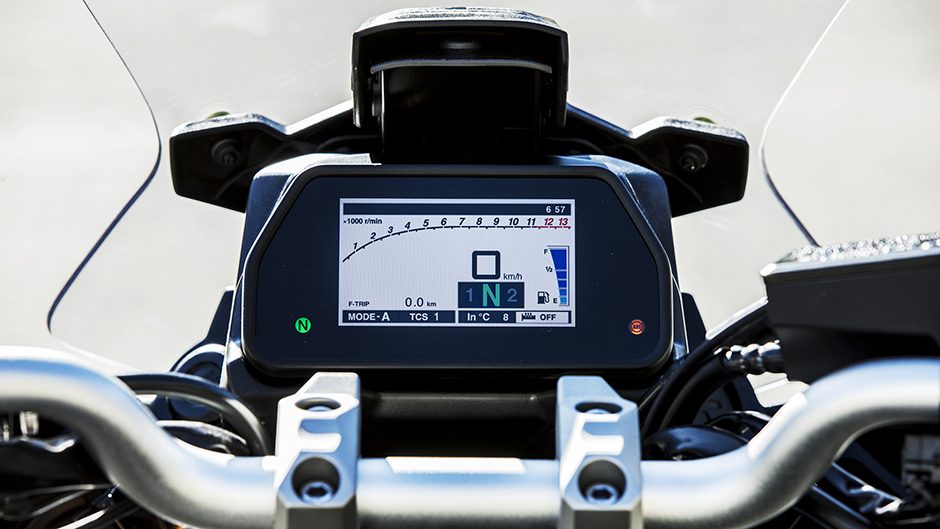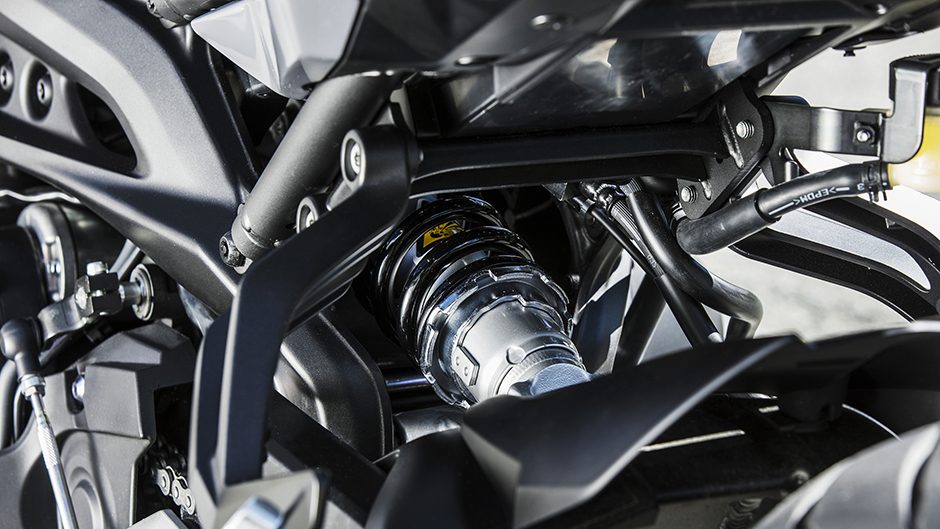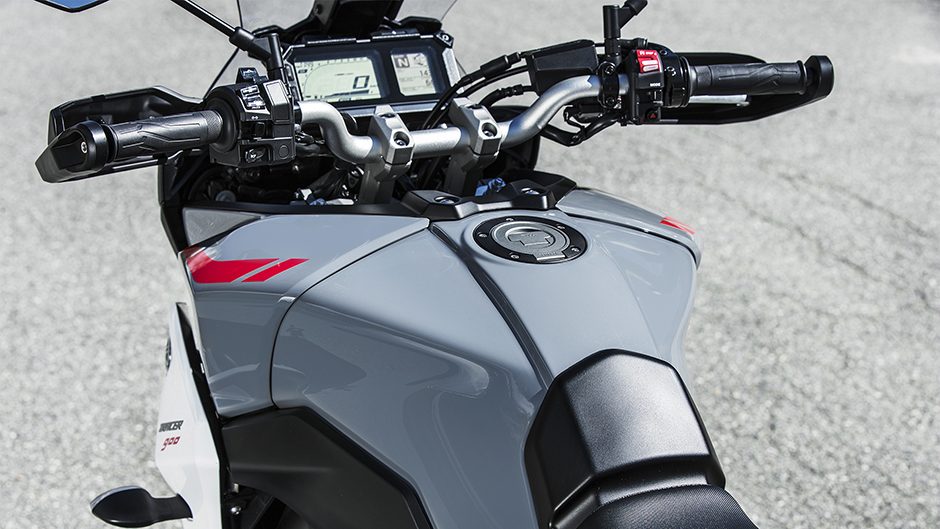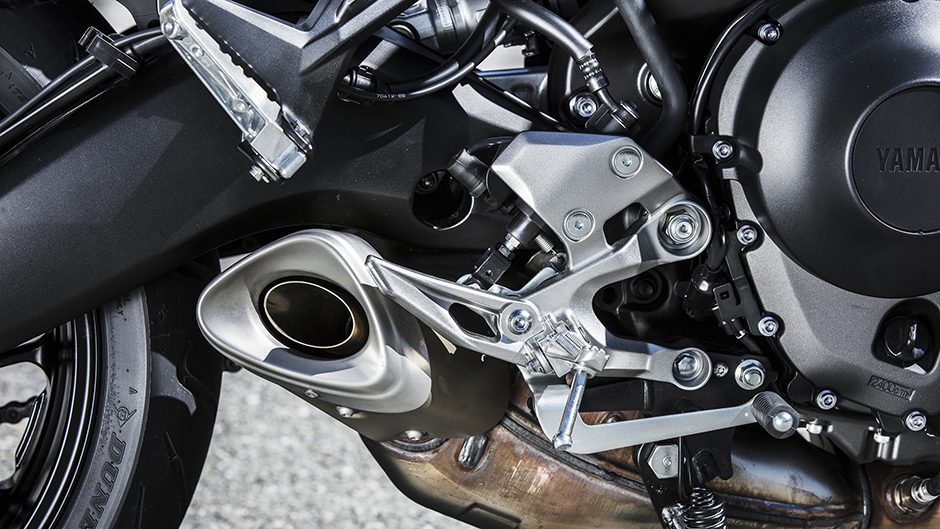2018 Yamaha Tracer 900 GT review
Words Nile Bijoux | Photos Geoff Osborne/Yamaha NZ
Yamaha has upgraded its middleweight sport tourer, the Tracer 900, and come up with a new 900 GT model. We took it for a daylong spin in crisp Queenstown conditions to determine if it’s the real GT deal.
While Triumph has long been associated with the inline three-cylinder engine configuration, Yamaha has been having a decent innings with the same layout recently. The MT-09 naked bike in 2014 was the first motorcycle application for a Yamaha triple since the shaft-driven XS750 and XS850 of the late 1970s, and was met with near universal approval.
Shortly thereafter, Yamaha saw fit to kit out the MT with a partial fairing, windscreen, added suspension travel, bigger fuel tank, ABS brakes and traction control, and handguards, among a slew of other additions. The result was the MT-09 Tracer, later renamed Tracer 900, a sports tourer leaning more towards the former than the latter.
And now, the tuning fork manufacturer has refreshed the bike and added a GT model, the only one coming to New Zealand. This new model boasts a newly designed windshield, wing mirrors, handlebars, seat, footrests, bodywork, rear fender, and grab rail.
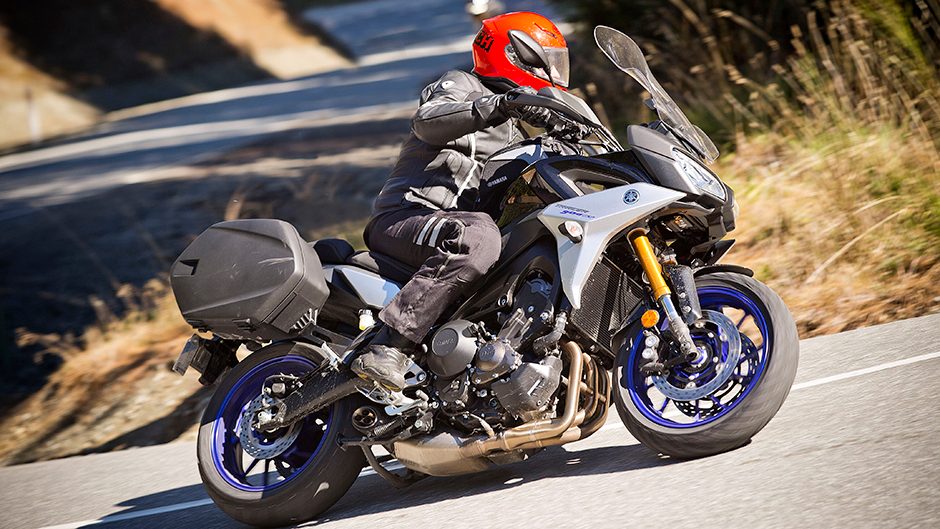
However, most of the update work has gone into the chassis. Yamaha says the new T-900 has a “more refined body,” a new swingarm for better touring characteristics, and a revised subframe. On top of the core bike changes, the GT gets KYB adjustable suspenders up front, while the rear is cushioned by a new preload-adjustable shock. There are also 22-litre hard luggage cases as standard, a full-colour TFT dash borrowed from the R1, a quick-shifter, cruise control, and heated grips.
Three-stage traction control (including off), ride modes, and ABS are all standard as well. There’s a bunch of accessories available too, including a nicer number plate hangar, a larger screen, a heated seat for rider and passenger, an Akrapovic exhaust, a radiator guard, tank protector, and soft side cases.
While we won’t get it, the base Trace gets a more rudimentary screen and front forks, and loses the panniers, cruise control, heated grips, and quickshifter. Yamaha NZ figured most buyers would overlook the base bike, given savings are only $1500. Australia will get both models, however.
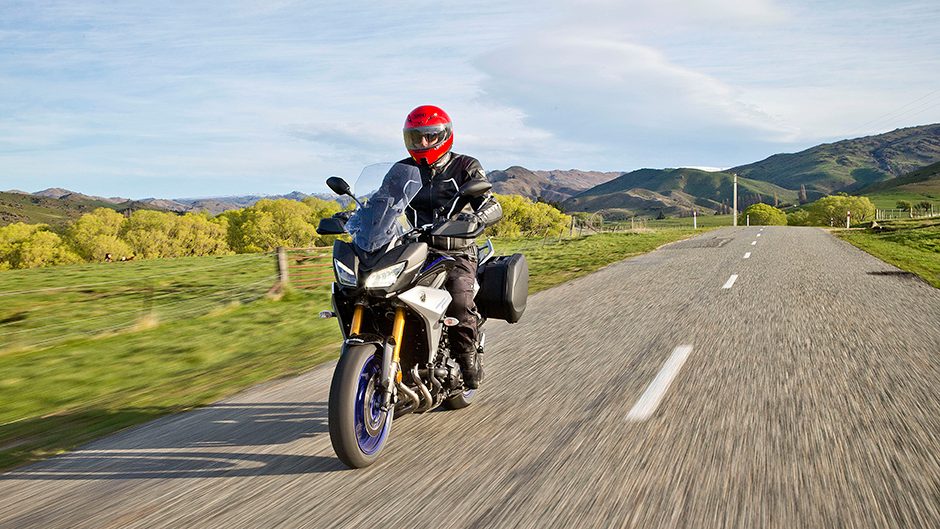
The 847cc crossplane triple feels different from the slightly smaller Triumph offering – something Yamaha no doubt worked hard on – with a more guttural edge over the Brit’s refined nature. You can hear the crossplane connection, especially next to the R1-powered MT-10. It offers 85kW and 88Nm, with a bunch of new internal edits and tweaks to make the engine as smooth and fun as possible.
The triple is also 10kg lighter than the inline four found in the MT-09’s predecessor, the FZ8. By happenstance, I managed to nab the more kitted showpony, which had the bigger screen, heated seat, and Akra ‘zorst. The former and latter I would recommend to anyone customising their Tracer a little.
Having a bigger screen didn’t affect the behaviour of the bike much and, in the words of Yamaha officials, the better pipe sounds “horn”. However, while I thought I’d hit the jackpot with the heated seat, I didn’t actually notice it all that much. The button to turn it on is not that easy to reach, just below the windshield, and with no on-screen icon to tell me if my tush was being toasted, I couldn’t tell if it was on or not. Guess I was too togged up.
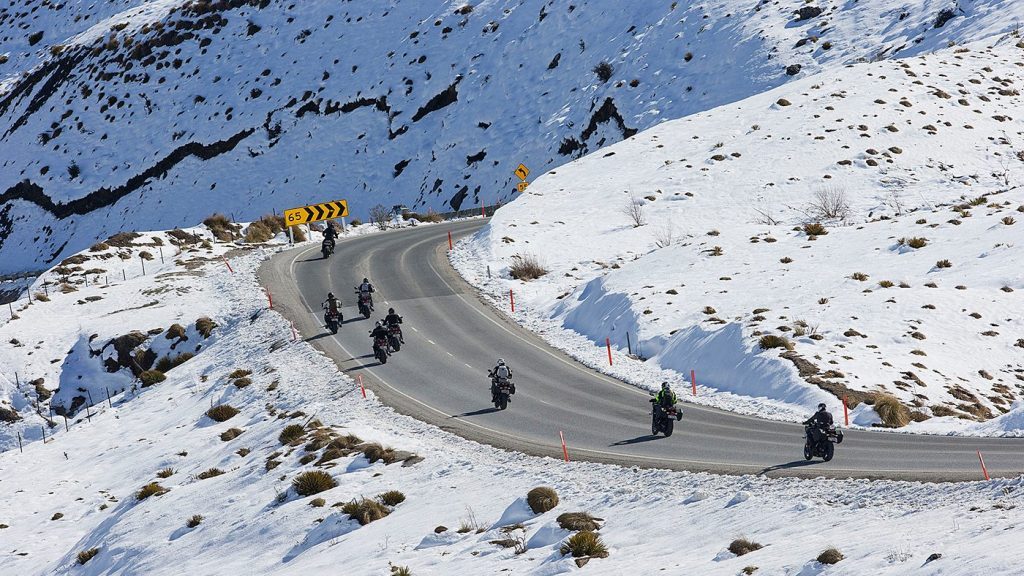
Giving it the berries on the backroads of Queenstown was an unbelievable experience, beautiful scenery aside. There’s pull from as low in the rev range as you want, and while the quickshifter only works on the speed up, it saves you the trouble of un-twisting your right wrist when you’re really howling. In an ideal world, it would work both ways but that would add cost and push it above its current price of $19,999. It’s also not quite as smooth as the latest European mechanisms.
Back down from warp to open road speeds, Yamaha’s chassis fettling is clear. The bike feels plenty stable through the bends, with the only shivering coming through the overly-soft suspension. Thankfully it’s easy enough to adjust yourself, and we’d recommend ratcheting up the preload some, depending on rider weight. No tools needed either, thanks to a convenient knurled knob for adjustment.The twin-298mm-disc stoppers are good, though lack the ultimate in feel through the lever. Adding braided lines might help, or perhaps different brake pads. Being a sports-tourer, the ability to do long hours in the saddle is a must. Thankfully, subtle tweaks to the riding triangle combined with the rehashed chassis have made the Tracer 900 into a proper mile muncher. We rode from 9am to 6pm (including intermittent stops) without fatigue.
A generous 18-litre fuel tank helped, meaning only one stop for juice was required for well over 300km of riding. Due to being unfamiliar with the area, I wasn’t keen to push as hard as some of the other battle-hardened ex-race journalists. The cool temp and the banks of snow piled either side of the road didn’t help engender confidence but the switchable ride modes and traction control settled the nerves some.
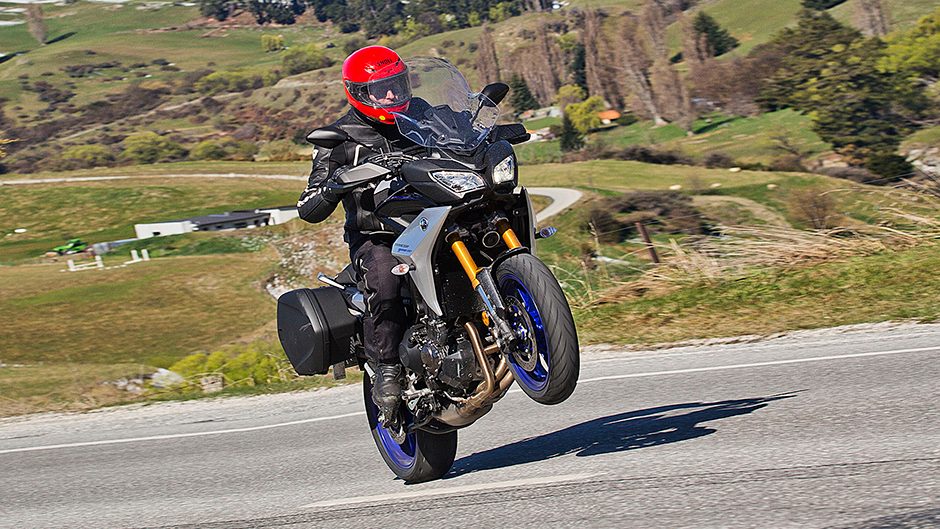
Even tackling the Crown Range road was less hairy than expected, despite the rear wheel slipping every time I so much as looked at the grit in the centre of the road. A small run-in with a patch of snow at speed told me the steering damper was working its silent magic while flicking between the three ride modes helped negotiate the varying roads. You get A for Aggressive (sporty, ‘knee-down’ riding), B for Boring (rain mode), and Standard, which finds a happy medium between the two.
The traction control works in three stages, including Off, and keeping it on 1 was fine for the majority of our ride. Flicking it up to 2 would be best for subpar grip situations, like the testy Crown Range road.
The R1-derived dash is great, being bright and easy to decipher. A scroll wheel mounted on the right-hand grip cycles through the menu options and works well, although convincing it to select what I had highlighted was fraught at times. Putting it on the throttle side also makes it a bit irritating to use but then maybe that’s the point, to detract from distractions.
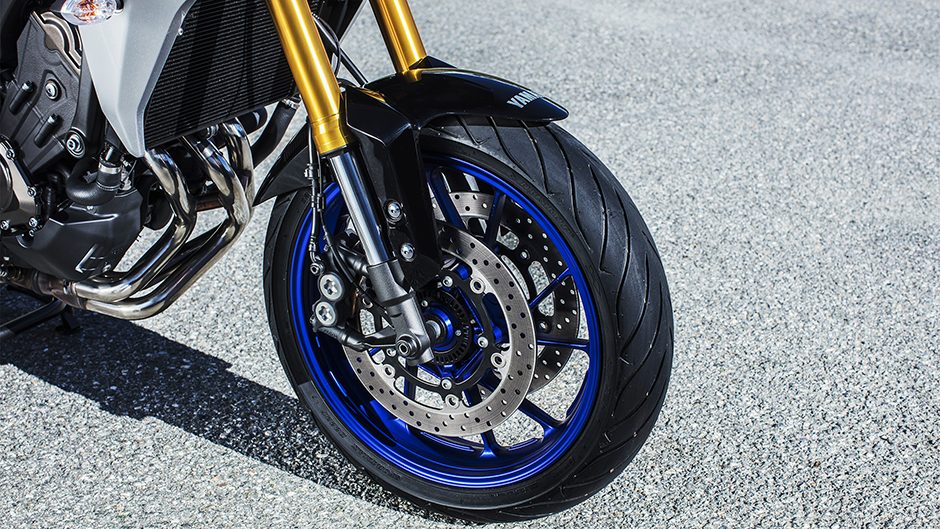
All that came to the fore when I was crisping my hands on the heated grips and couldn’t seem to turn them down a notch so I resorted to hitting cruise control and cooled my hands off in the Otago breeze.
Upon returning from our daylong ride loop, we all agreed how good some of the roads were, how we were lucky there wasn’t more snow around, and how expensive fuel is in Wanaka.
| Model | Yamaha Tracer 900 GT | Price | $19,999 |
| Engine | 847cc liquid cooled, fuel injected IL3, 85kW/88Nm | Drivetrain | |
| 0-100km/h | 3.54sec | 100-0km/h | 43.39m |
| 80-120km/h | 1.60sec (45.30m) | Weight | 227kg |


